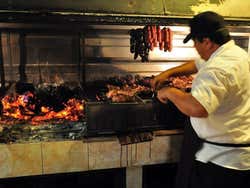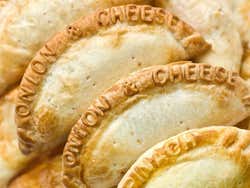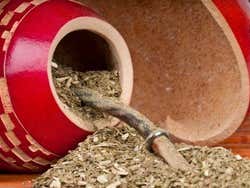
Where to eat in Buenos Aires
When it comes to food in Buenos Aires, you'll find rich, hearty and tasty dishes. Argentinian cuisine differs from the rest of South America by maintaining its creole and indigenous character while showing a great influence of European gastronomy, especially Italian and Spanish cuisine.
Argentina is one of the planet's main agricultural producers and its large output of quality beef makes it the most consumed product, reaching 100 kilos of beef per person per year.
Here are some of the main delicacies that you can enjoy in the restaurants of Buenos Aires.
Typical dishes of Buenos Aires
- Asado: One of the most typical dishes in Argentina, it consists of grilled beef, lamb or goat.
- Empanadas: The Argentinian "empanadillas" have nothing to do with those of other places, you have to try them.
- Chimichurri: Typical dressing with lots of flavor that is usually served with meats.
- Puchero: Stew prepared with meat and vegetables.
- Milanesa: Battered and fried veal fillet.
- Churrasco: Cut of meat similar to "bife", a steak usually served with french fries or salad.
- Locro: Yuca-based stew that may include beef and offal.
- Fainá: Dish made from chickpea flour, water, olive oil, salt and pepper.
- Mondongo: Dish prepared with the offal of different animals.
- Buseca: Dish similar to tripe.
- Matambre: Cut of beef between the skin and the ribs that is usually boiled.
- Salsa criolla: Sauce used to marinate red meat or roast.
- Pebete: Ham and cheese sandwich with mayonnaise.
- Choripán: Chorizo on bread that can be accompanied with chimichurri sauce.
- Sándwich de miga: Sandwich with a layer of butter that usually has ham and cheese, although there are other varieties.
- Pan lactal: Sliced bread made with milk.
- Panqueque: Pancake that is usually accompanied by dulce de leche.
- Torta frita: Typical snack prepared with bread dough that can be accompanied by membrillo (quince paste) or dulce de leche.
- Pastelitos criollos: Crunchy flaky dough filled with quince or sweet potato paste.
- Chancaca: Dehydrated and solidified sugar cane juice.
- Dulce de batata: Dark-colored sweet jelly. “Postre vigilante” includes a portion of cheese and a portion of sweet potato jam.
- Dulce de leche: Sweet sauce made of caramelized milk.
- Alfajor: Typical Argentinean treat consisting of two or more layers of cookie or sponge cake with dulce de leche between them.
- Medialuna: Croissant.
- Bolas de fraile: Fried sweet dough ball filled with dulce de leche, dulce de membrillo or pastry cream.
- Pastafrola: Pie covered with dulce de membrillo, dulce de batata or dulce de leche.
Mate
If there's one drink that's characteristic of Argentina, it would be mate. Mate is an infusion prepared from yerba mate, which can be flavored with sugar or orange and lemon peels. Like coffee and tea, mate is a caffeine-rich substance.
Mate is much more than a drink for Argentines, as it represents a symbol of trust, friendship and intimacy between people who share the traditional and tasty infusion. It's very common to find Argentines with a large thermos under their arm and a mate (the container in which mate is drunk) strolling down the street.
Best places to eat in Buenos Aires
Finding a place to eat in Buenos Aires is not usually a problem, Argentines enjoy eating and it's easy to find traditional parrillas to enjoy the delicious local meat, as well as a large number of pizzerias spread all over the city.
Some of the best places to eat in Buenos Aires are Puerto Madero, a slightly more expensive but pleasant area, and the lively Plaza Serrano (Plaza Cortázar), located in the heart of Palermo Soho.
Schedules
Local meal times can vary, with breakfast usually served between 7 am and 10 am; bars often have coffee and croissants for breakfast and afternoon snacks.
Lunch in Buenos Aires is served from 12:30 pm and dinner usually starts at 8:30 pm, although it's possible to find restaurant kitchens open very late.


